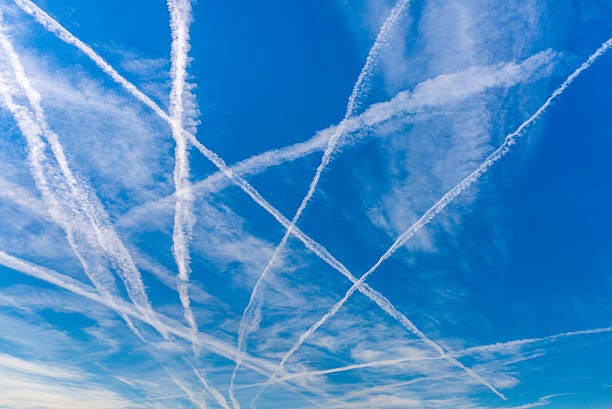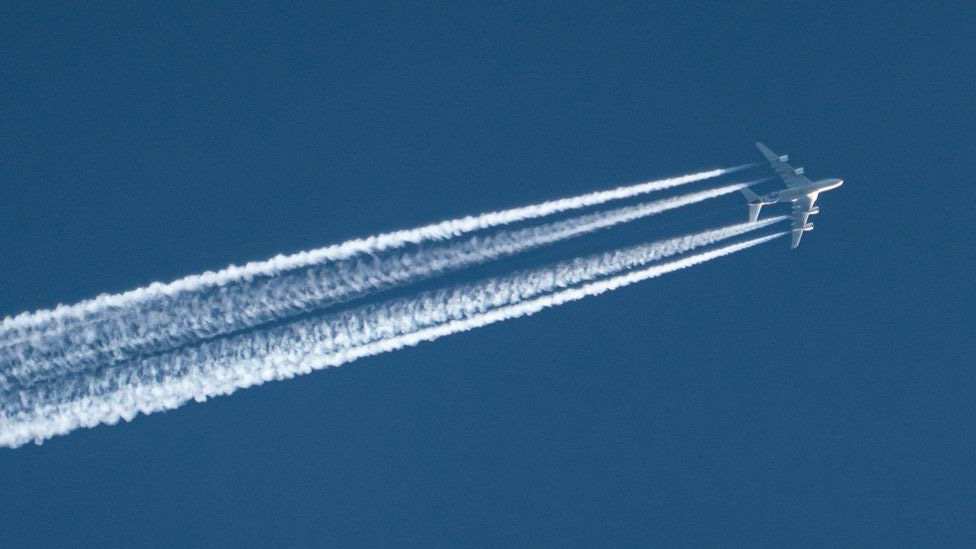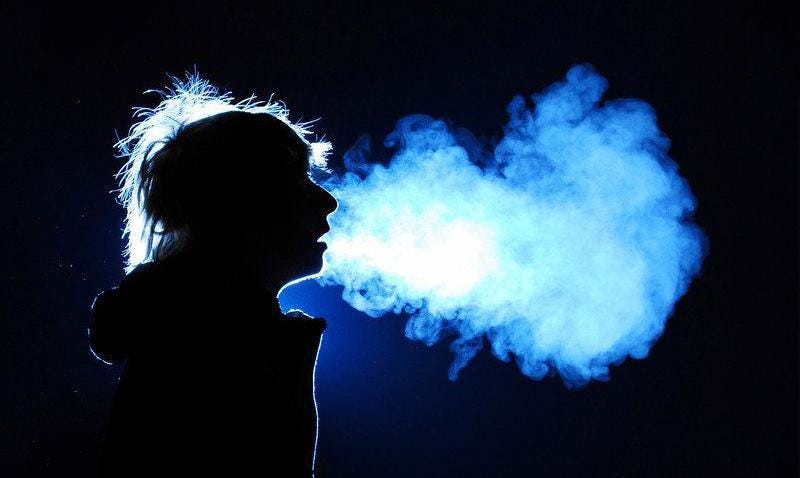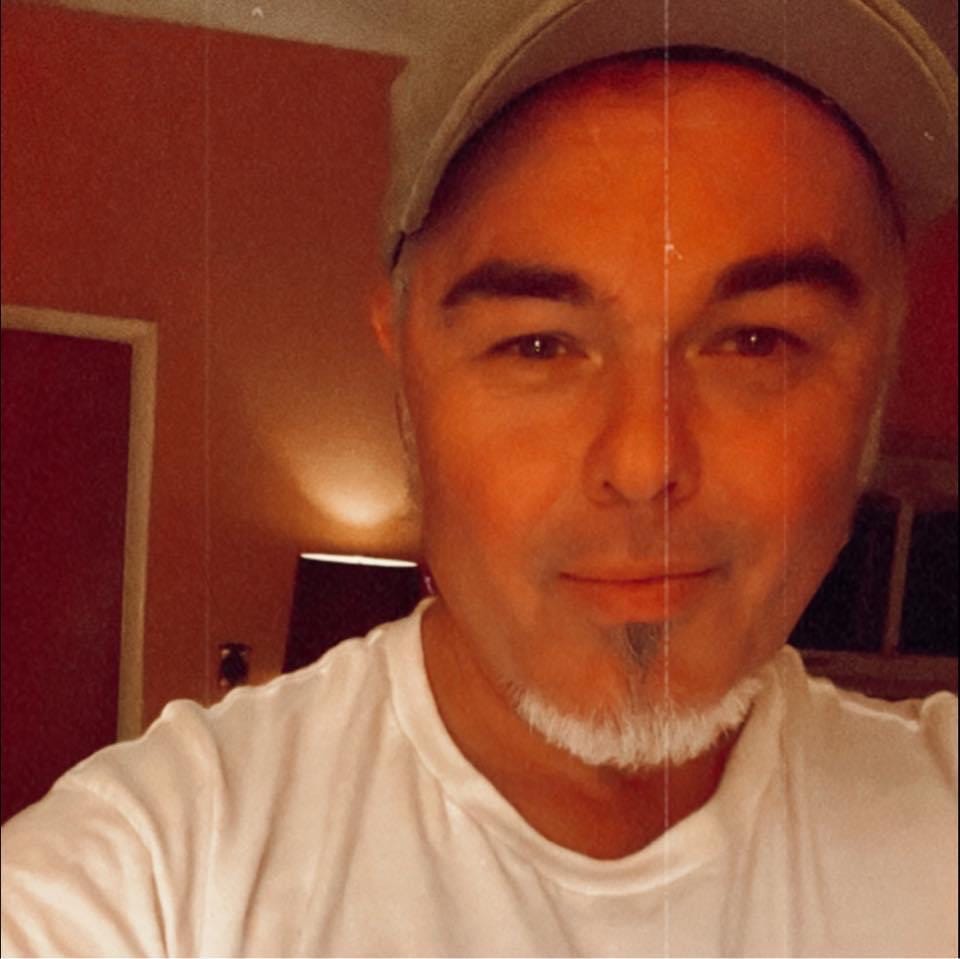Lets start with some basic laws of physics first:
The second law of thermodynamics is a physical law based on universal experience concerning heat and energy interconversions. One simple statement of the law is that heat always moves from hotter objects to colder objects (or "downhill"), unless energy in some form is supplied to reverse the direction of heat flow. Another definition is: "Not all heat energy can be converted into work in a cyclic process.
What this means is even if “chem trails” are a thing the second law of turning chemicals into a gaseous state will become useless at some point. Nothing remains in gaseous state indefinitely.
The first law of thermodynamics states that: energy can neither be created nor destroyed, only altered in form. For any system, energy transfer is associated with mass crossing the control boundary, external work, or heat transfer across the boundary
The sight of long streaks across the sky, left behind by high-flying aircraft, has captivated human curiosity for decades. These streaks can be categorized into two main types: contrails and chemtrails. While contrails are a natural byproduct of jet engine exhaust, chemtrails are a subject of controversy, with some alleging that they contain chemicals intentionally released into the atmosphere to alter weather patterns which has been conflated with actual experients to “seed” clouds to increase cloud cover and rain fall.
In this article, we will delve into the science behind contrails, the theories surrounding chemtrails, documented cloud-seeding experiments, and the impact of atmospheric conditions and entropy on the duration of these sky trails.
I. The Science Behind Contrails
Contrails, or "condensation trails," are the visible streaks of ice crystals or water droplets that form when hot, moist engine exhaust gases encounter cold, high-altitude air. This process involves several key steps:
Engine Combustion: Jet engines burn aviation fuel mixed with air, producing exhaust gases that include water vapor, carbon dioxide, and trace amounts of other chemicals.
Moisture Content: The atmosphere at cruising altitudes (typically 30,000 feet or higher) contains varying levels of humidity. Higher humidity promotes contrail formation.
Temperature Gradient: The temperature at high altitudes is significantly colder than at ground level. This temperature difference is crucial for the condensation process.
Nucleation and Growth: Hot engine exhaust gases release water vapor into the cold air, causing it to condense into tiny ice crystals or water droplets, forming the contrail.
Trail Dissipation: Contrails can either dissipate quickly, within seconds or minutes, or persist for longer periods, depending on atmospheric conditions.
II. Atmospheric Conditions and Contrail Persistence
The persistence of contrails is influenced by various atmospheric factors:
Humidity: High humidity levels promote contrail formation and persistence. Dry air at high altitudes makes it more likely for contrails to dissipate quickly.
Temperature: Lower temperatures at high altitudes are conducive to contrail formation. Cold air allows ice crystals to form and remain suspended.
Altitude: Contrails are more likely to persist at higher altitudes, where the air is colder and contains more moisture.
Wind Patterns: Wind can spread contrails, causing them to widen and linger in the sky.
Atmospheric Disturbances: Natural phenomena like frontal boundaries and turbulence can affect contrail persistence.
While chemtrails remain largely a topic of conjecture, cloud seeding experiments are real and well-documented scientific endeavors. Cloud seeding has often been conflated with chem trail experiments. Cloud seeding involves the introduction of substances such as silver iodide or calcium chloride into clouds to encourage precipitation. The purpose of the experiments have aimed to enhance rainfall or snowfall in specific regions and have been conducted for decades. Key points to consider about cloud seeding include:
Scientific Purpose: Cloud seeding experiments are conducted to study and potentially mitigate drought conditions, enhance water resources, or reduce the impact of hailstorms.
Transparency: Cloud seeding experiments are typically conducted openly and with cooperation from various scientific and governmental organizations. They are not covert operations.
Weather Modification: While cloud seeding can influence precipitation, it does not have the capacity to radically alter weather patterns on a large scale, as alleged by the chemtrail theories.
III. Duration of Contrails and Entropy
The duration of contrails in the sky can vary significantly and is influenced by atmospheric conditions and entropy:
Short-lived Contrails: These contrails typically dissipate within seconds or minutes. They form in conditions where the air is relatively dry or warm, making it difficult for ice crystals or water droplets to remain suspended.
Persistent Contrails: In more favorable conditions, contrails can last for hours, spreading across the sky and forming thin cloud layers. These persistent contrails are more common in regions with high humidity and lower temperatures at cruising altitudes.
Entropy and Contrail Formation: Contrail formation represents a transition from a state of order to disorder. The orderly flow of hot engine exhaust gases transforms into the random arrangement of ice crystals or water droplets as they mix with the surrounding air. This increase in entropy is a natural consequence of the condensation process.
IV. Conclusion
In conclusion, contrails are a scientifically explained phenomenon resulting from jet engine exhaust interacting with cold, high-altitude air. Their duration and persistence depend on atmospheric conditions such as humidity, temperature, altitude, and wind patterns. In contrast, chemtrails are a conspiracy theory lacking credible scientific evidence.
Documented cloud-seeding experiments are real and aim to modify precipitation patterns for scientific and practical purposes. They are conducted openly and transparently, in contrast to the secretive and unsubstantiated truth claims of chemtrails. The only way to verify the chem trail paradigm would be to take copious amounts of air samples at altitude. conduct testing on said air samples to determine the contents.
Understanding the science behind contrails and the real-world applications of cloud seeding is essential for demystifying the often-misunderstood phenomena of sky trails. While contrails may appear mysterious, they are a product of natural processes governed by the laws of physics and meteorology.
Next time in cold and very damp our breath and time how long the cloud lingers. Then think about the amount of air a Jet Engine consumes and voila !!







